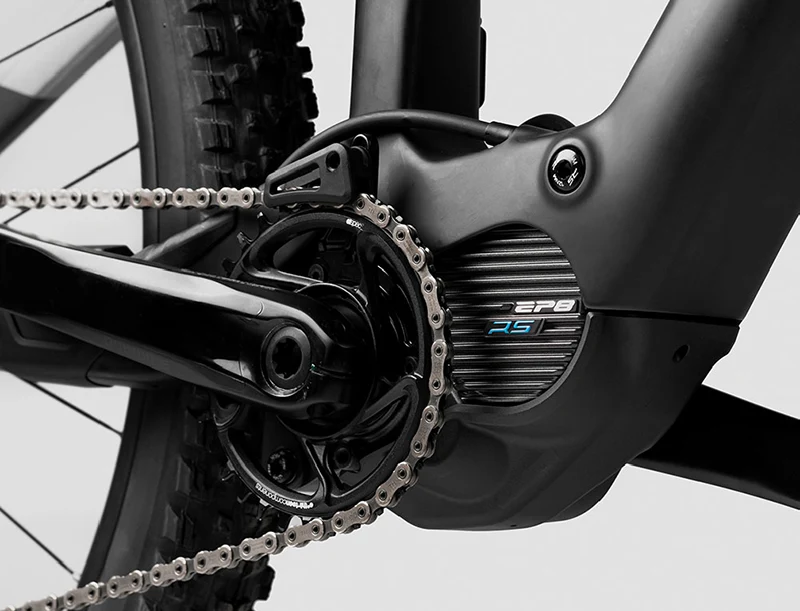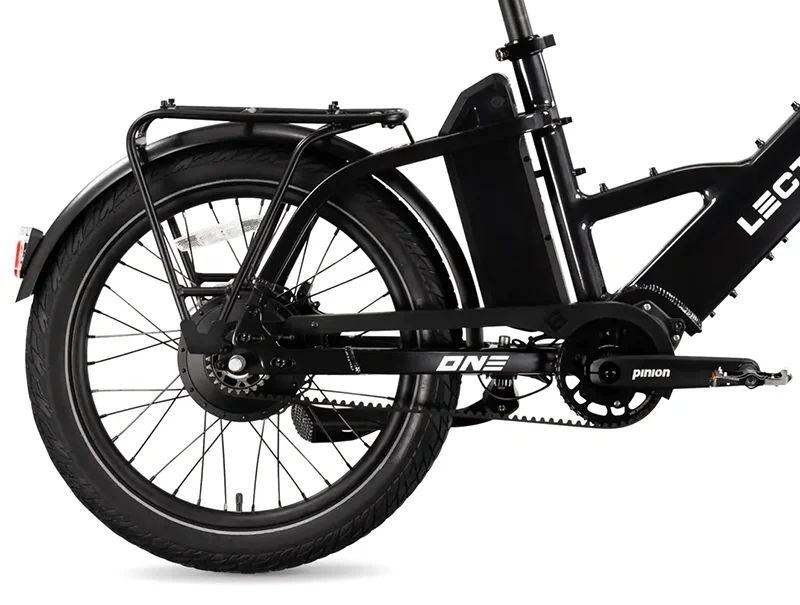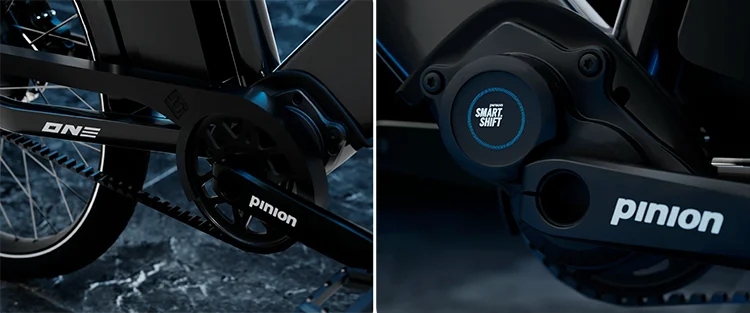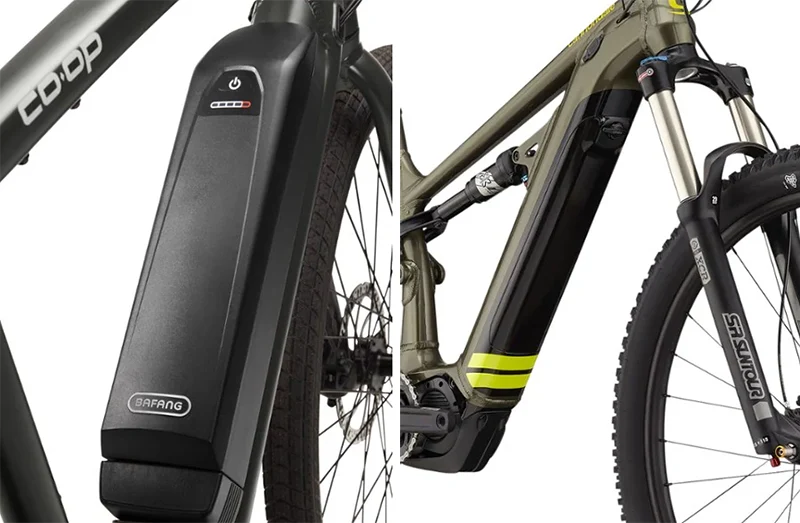Electric bikes are amazing, but they have one massive drawback: they can cost an arm and a leg!
Sure, there are many cheap electric bikes on the market, but the majority of the best electric bikes out there cost more than most people feel comfortable spending.
The question is, why are electric bikes so expensive? In some cases, they cost more than a full-blown motorcycle.
On the surface, it makes no sense. However, when you dig a bit deeper, things start to come into place.
Below, we’ll explain the 8 most important factors that make electric bikes so expensive in detail.
We recommend also reading our guide titled “How much does an electric bike cost?” that will shed light on the different e-bike price ranges.
1. Electric Motors Are Expensive

Mid-drive motors offer a more natural power distribution, but are notoriously expensive. (Source: Orbea.com)
The main feature that separates electric bikes from human-powered bicycles is the motor. And it’s no secret that electric bike motors can be very expensive.
In addition to assisting the rider with supplemental power, these motors also need to meet a few other important requirements:
- They need to be small
- They need to be light
- They need to be easy to service
As you can imagine, these additional requirements only add to the final price tag.
E-bike motors also need to be seamlessly integrated, which makes things even worse in the financial sector.
For example, rear hub motors are installed in the rear wheel’s hub, which means that the rear end of the frame, the rear rim, and the spokes need to be stronger than on a traditional bike.
Similarly, mid-drive motors are installed around the bottom bracket, which means that this area needs to be specially designed to fit a motor and reinforced to withstand additional forces.
For these reasons, the motor is perhaps one of the main reasons why electric bikes are so expensive.
2. Batteries Are Even More Expensive
In order to work and propel you forward, electric motors need power which they draw from a battery mounted on a frame or integrated inside the tubing.
Almost all modern electric bikes use li-ion batteries, which are still pretty expensive due to how resource-demanding they are.
For example, the cost of a Bosch battery starts at around $500 for the smallest 400 Wh model and goes above $1,000 for the largest 800 Wh model. This needs to be factored into the final cost of an e-bike.
If the battery is integrated into the down tube, that means that the frame needs to be custom-made to fit a battery. Plus, the system needs to be weatherproof to avoid water damage.
When you take all of these things into consideration, the price of electric bikes starts to make sense.
3. Controllers and Sensors
A motor and a battery are crucial components on an electric bike. However, they won’t be able to do much on their own.
To make the system complete, you also need a controller and sensors.
The controller essentially serves as the brain of the e-bike, allowing the motor and the battery to communicate. It dictates how much power the battery should send to the motor at any given time, relative to the current power demand.
The sensors are there to determine how much power the motor needs. They measure the rider’s power input, allowing the motor to supplement that power with the correct amount of supplemental power.
The differences between cadence and torque sensors can also drive up the cost of an e-bike, as torque sensors are more sophisticated and thus more expensive.
4. More Durable Components That Cost More

More and more modern e-bikes come with sturdier components, such as carbon belts pictured above. (Source: Lectricebikes.com)
Electric bikes can be quite powerful, which means that some of their components need to be able to withstand higher loads.
For example, the electric motor combined with the rider’s pedaling puts additional stress on the chain, which needs to be sturdier than on a traditional bike. For this reason, many manufacturers are building belt-drive electric bikes, which are more durable but also more expensive.
Moreover, due to the additional weight of the motor and battery, the rims and spokes also need to be more durable, which costs money.
E-bikes allow cyclist to ride at higher speeds, which means they need powerful e-bike brakes to be able to slow down securely (especially when you factor in the additional weight). That’s why almost all electric bikes come with disc brakes, many of which are hydraulic and have four pistons.
As you can see, all of these tweaks add up in the end and drive the final price up.
5. Sturdy Frames
The frame is the skeleton of a bike that keeps all of the components together. The additional speed and weight associated with e-bikes means that the frame needs to be able to withstand higher forces.
That’s why electric bike frames are bulkier than traditional frames, requiring more materials, more testing, and higher safety standards.
In addition to that, most e-bike frames also need to be custom-made to incorporate specialized features such as mid-drive motors and integrated downtube batteries.
6. Ongoing Research and Development

Lectric offers its ONE model with a Smart Shift Pinion Gearbox and a belt drive, which requires strenuous R&D. (Source: Lectricebikes.com)
When it comes to the design of traditional bikes, we can say that not much has changed in the past several decades.
Don’t get us wrong, modern bikes are more complex and more sophisticated compared to bikes from 50 years ago, but it’s essentially the same machine. It has a diamond-shaped frame, rolls on two wheels, and it’s powered by pedals attached to a drivetrain.
On the other hand, electric bikes require constant research and development to stay on top of technological advancements in electric energy.
The motors are getting smaller, lighter, and more powerful, while the batteries are getting more compact, yet more energy dense.
E-bikes are also becoming more and more lightweight due to advances in frame materials and components. Weight is one of their main drawbacks compared to traditional bikes, so manufacturers are investing a lot to make more lightweight electric bikes.
All of this is possible thanks to costly R&D processes that end up factored into the e-bikes’ final price tag.
7. Advanced Modern Features

A color display and taillights with integrated turn signals are common on quality e-bikes. (Source: Aventon.com)
The electric assistance is not the only thing that separates electric bikes from non-electric bikes.
E-bike manufacturers often incorporate other advanced modern features such as bright LED lights, color LCD screens, Bluetooth connectivity, Android/iOS app integration, GPS, anti-theft protection, and so on.
Entry-level electric bikes with few of these features can cost as low as $500. Consider brands such as Lectric or Engwe.
On the other hand, high-end models with all the bells and whistles can cost close to or more than $10,000. Brands like Specialized, Trek, Gazelle, or Tern come to mind.
Of course, a balanced approach costs somewhere in-between these two extremes.
So, with that in mind, electric bikes can be expensive, but they don’t need to be, it all depends on what features you find essential.
8. Niche Market
Last but not least, even though the demand for e-bikes has never been higher worldwide, this is still a niche market.
The number of consumers is much lower compared to cars or non-electric bicycles, which means that the profit margins are also lower.
This means that electric bikes are produced in smaller quantities which affects economies of scale—the cost advantages that manufacturers obtain due to their large scale of operation.
In other words, producing fewer units means that the fixed costs (such as marketing, R&D, tooling, and factory overheads) are spread over a smaller number of bikes, resulting in a higher cost per unit.
In addition, smaller production numbers also mean that brands need to pay more for parts and components.
Combined together, all of these factors drive the price up for the final consumers.
Final Thoughts: Will Electric Bikes Become Cheaper?
Electric bikes are undoubtedly a significant investment, and their high costs can be a deal-breaker for many would-be owners.
However, as technology continues to evolve and the market expands, there is hope that prices will eventually decrease. This has already been happening for the past few years, though slowly.
Economies of scale will improve as cities invest more in cycling infrastructure and more consumers embrace e-bikes, leading to lower production costs.
Additionally, advancements in battery technology and materials will likely drive down the prices of key components further.
Government incentives and subsidies may also play a role in making e-bikes more affordable. Many states and cities around the world offer these to future owners of electric vehicles.
While it might take time, the trend towards more accessible and cost-effective electric bikes seems inevitable, promising a more sustainable and cycling-oriented future.


Your Feedback is Important!